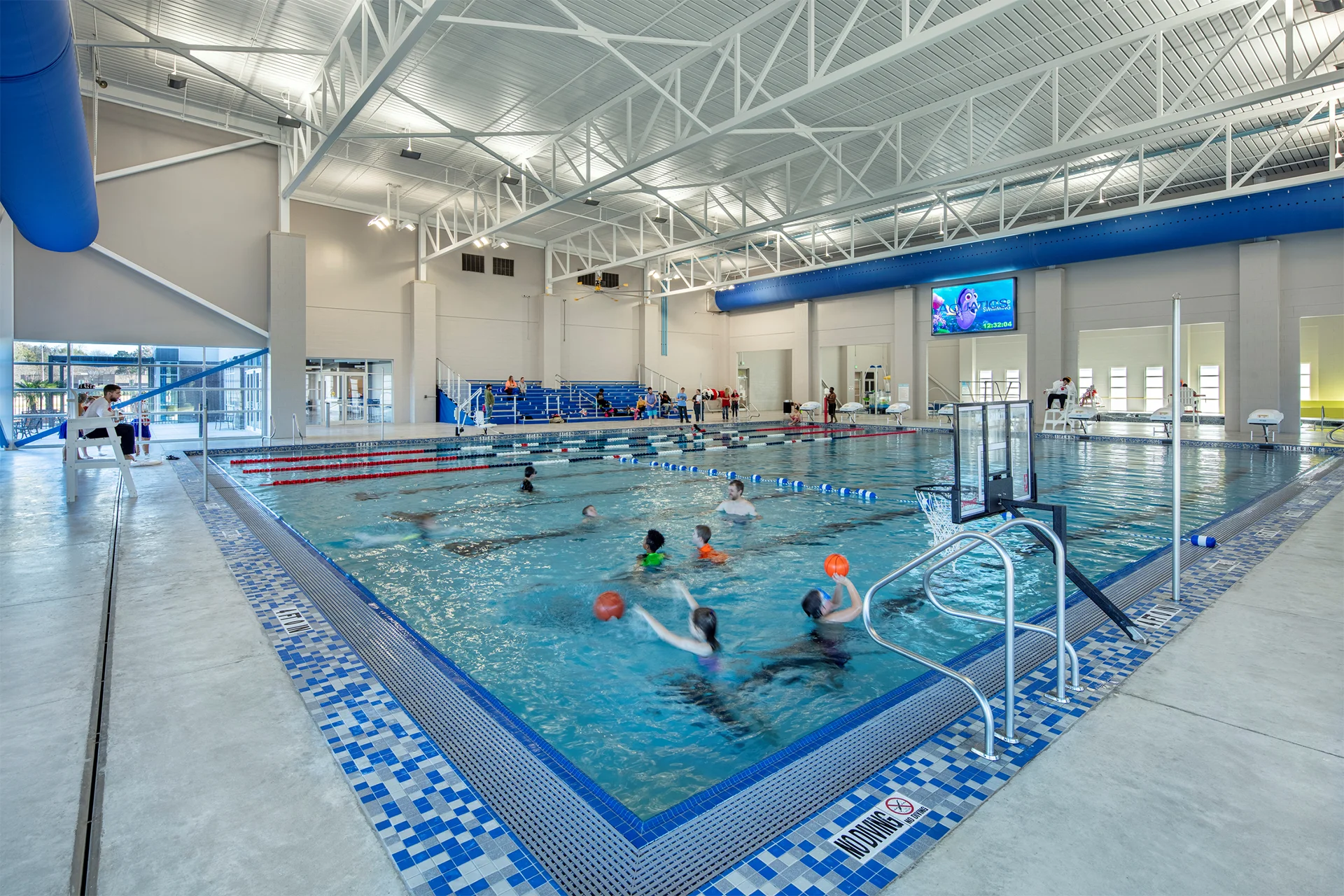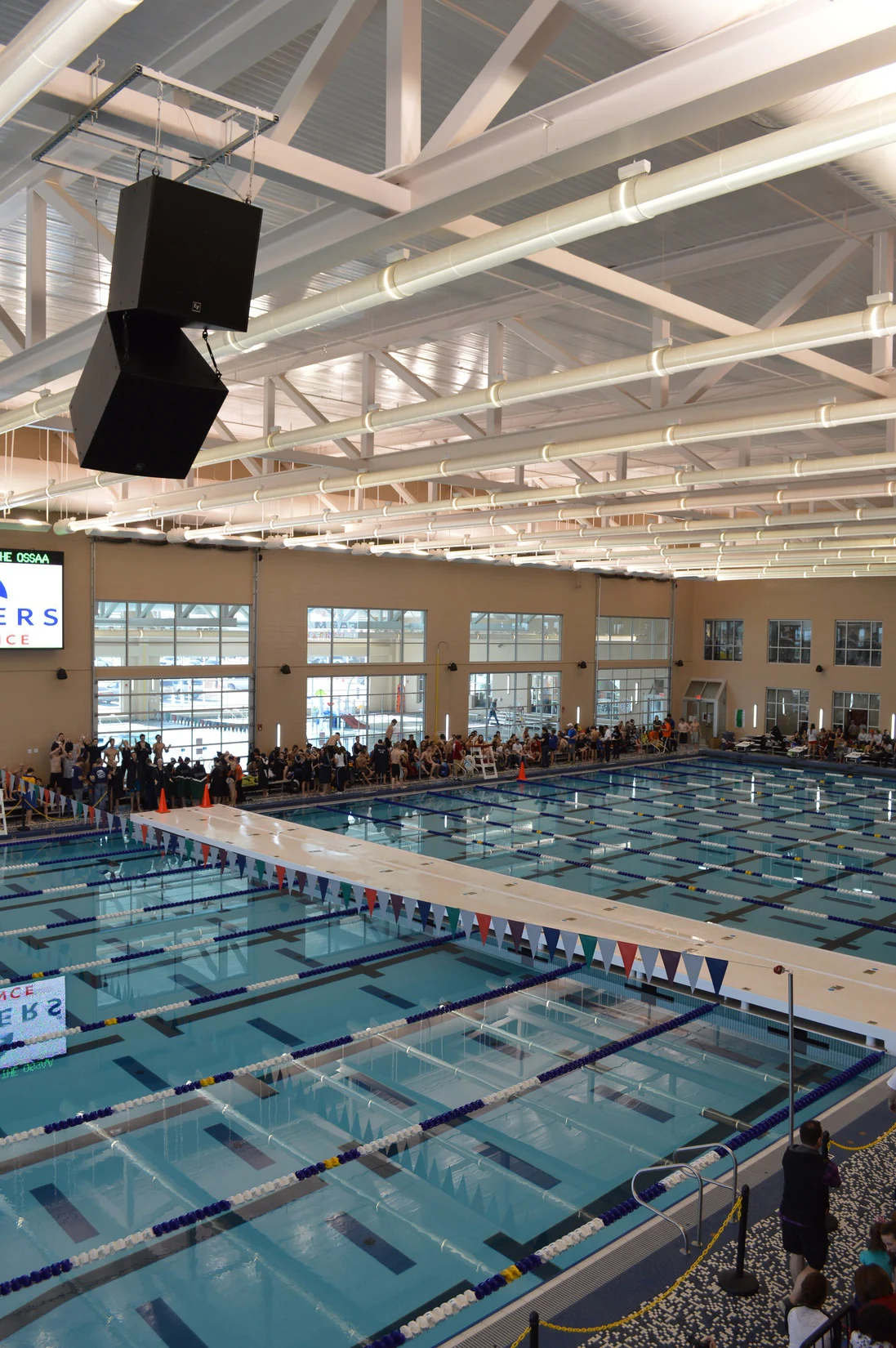
Mark Owings, AIA, LEED AP
Senior Vice President - ArchitectureEvery city has a personality – a reason people visit and a reason they stay. In smaller cities, it is often a strong sense of tradition and perhaps a few families that hold everyone together. In larger cities, leaders take advantage of amenities for drawing visitors, retaining residents, and uniting a diverse mix of cultures. Regardless of the size of city, amenities that offer recreational opportunities are important to people with an active lifestyle, and aquatic centers are one of the most versatile options for a diverse community. These centers create a sense of place, offer health and wellness opportunities, and have a positive impact on the economy.
A sense of place
While swimming is a lifetime sport, a pool alone isn’t enough for the modern family. Aquatic centers add additional elements of active and passive recreation creating a more memorable experience for the whole family. The cumulative experience creates a sense of place – a desirable destination for residents as well as visitors. Shared experiences strengthen families and bring a sense of cultural unity and acceptance to diverse communities. Patrons also have opportunities to network and make social connections further unifying the community.
Rogers Aquatics Center - Rogers, Arkansas
Health and Wellness
Aquatic centers can enhance the health and wellness across generations in a community. Counsilman-Hunsaker, national aquatics consultants, in a presentation to the city of Durham, identified four groups of aquatic center users: recreational, instructional, competition, and wellness and therapy. They suggest that in addition to creating an entertainment space, aquatic centers provide opportunities for learning lifesaving skills, venues for local athletes to practice and host competitions, and spaces for citizens of all ages and abilities to exercise.

Pine Bluff Aquatics Center - Pine Bluff, Arkansas
Economic impact
A municipality has a responsibility to create spaces of interest, but also to balance cost and revenue for the community. Adding an aquatic center to your community can benefit the economy both directly and indirectly by providing jobs, increasing property values, and supporting economic development. In addition to job creation, an aquatic center provides a supervised safe place for teens to congregate with their friends. Swim meets and other organized events bring overnight out-of-town guests who will spend money in hotels, restaurants, gas stations, and retail shops. Swim City USA’s economic impact analysis showed almost a $12 million dollar impact to the city of St. Charles, Missouri over a three-year period with the addition of an aquatic center.

Pine Bluff Aquatics Center - Pine Bluff, Arkansas
Larger communities may be able to support a full-scale aquatic center with lap pools, lazy rivers, play structures, and diving areas. Smaller communities may start with a splash park that requires less staff and infrastructure to support. A thoughtful architectural design along with demographically appropriate elements will create an aquatic center that becomes part of your city’s unique personality.